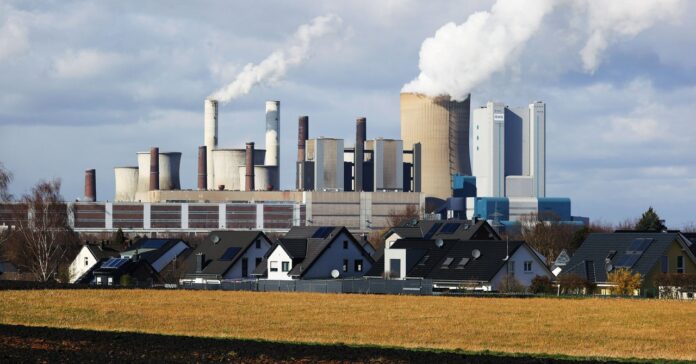The world seems to be simultaneously on fire and flooding, and the latest expert report indicates that we’ve just about run out of time to avoid even more severe climate change. All of that should have us looking for ways to cut carbon emissions as quickly and economically as possible.
Some good news in that regard came via the recent release of a paper that looks at how much individual power plants contribute to global emissions. The study finds that many countries have facilities that emit carbon dioxide at rates well above either the national or global average. Shutting down the worst 5 percent of plants would immediately wipe out about 75 percent of the carbon emissions produced by electricity generation.
It’s easy to think of power generation in simple terms, like “renewables good, coal bad.” To an extent, that statement is accurate. But it also compresses all power generation, from “somewhat bad” to “truly atrocious,” into a single category. And it’s clear from a variety of research that the situation is more complex. Depending on their vintage, different plants convert fossil fuels to power at varying degrees of efficiency. And some of the least efficient plants are only brought online during periods of very high demand; the rest of the time, they’re idle and produce no emissions at all.
The interactions among these factors determine whether a given power plant is a major contributor to emissions or simply part of a country’s background noise of carbon output. If we had a global inventory of emissions and production from every power plant, we could use that data to identify the worst offenders and make a target list for efficiently lowering our carbon output.
In fact, we did have one—emphasis on the past tense. Using data from 2009, someone had put together the Carbon Monitoring for Action database, or CARMA. Now, nearly a decade later, Don Grant, David Zelinka, and Stefania Mitova of the University of Colorado Boulder used 2018 data to build an update to CARMA, providing emissions data that is likely to be far more current.
The task was more difficult than it might seem. Some countries provide detailed emissions data on a per-plant level, so their data could simply be imported straight into CARMA. But many others do not. For those countries, the researchers relied on everything from production data obtained by the International Energy Agency to engineering specifications for individual plants.
When the researchers identified the largest sources of uncertainty in their data, they found that it mostly clustered in the smaller plants, which have the least impact on the overall emissions. For the large facilities that are likely to be major contributors, the data is usually very good.
It should surprise nobody that all the worst offenders are coal plants. But the distribution of the highest-polluting plants might include a bit of the unexpected. For example, despite its reputation as the home of coal, China has only a single plant in the top-10 worst offenders. In contrast, South Korea has three on the list, and India has two.
In general, China doesn’t have many plants that stand out as exceptionally bad, in part because so many of its plants were built around the same time, during a giant boom in industrialization. As such, there’s not much variance from plant to plant when it comes to efficiency. In contrast, countries like Germany, Indonesia, Russia, and the US all see a lot of variance, so they’re likely to have some highly inefficient plants that are outliers.
Put a different way, the authors looked at how much of a country’s pollution was produced by the worst 5 percent of its power plants, ranked by carbon emissions. In China, the worst 5 percent accounted for roughly a quarter of the country’s total emissions. In the US, the worst 5 percent of plants produced about 75 percent of the power sector’s carbon emissions. South Korea had similar numbers, while Australia, Germany, and Japan all saw their worst 5 percent of plants account for roughly 90 percent of the carbon emissions from their power sectors.
When it comes to carbon emissions, the worst 5 percent of power plants account for 73 percent of the total power sector emissions globally. That 5 percent also produces over 14 times as much carbon pollution as it would if the plants were merely average.
Obviously, finding ways to shutter the worst plants and replace them with emissions-free alternatives would cut the power sector’s emissions by 73 percent and total emissions by about 30 percent. But that’s not always possible, so the authors looked at several ways those plants could do better while continuing to produce electricity.
Simply boosting each plant’s efficiency to the average for the country would drop power sector emissions by a quarter and up to 35 percent in countries like Australia and Germany. Switching them to natural gas, which produces less carbon dioxide per amount of energy released, would drop global emissions by 30 percent, with many countries (including the US) seeing drops of over 40 percent. Again, because China doesn’t see a lot of variance among its plants, these switches would have less of an impact, being in the area of 10 percent drops in emissions.
But the big winner is carbon capture and storage. Outfitting the very worst plants with a capture system that was 85 percent efficient would cut global power sector emissions in half and total global emissions by 20 percent. Countries like Australia and Germany would see their power sector emissions drop by over 75 percent.
Overall, these are massive gains, considering that it’s not unreasonable to think that the modifications could be done in less than a decade. And they show the clear value of targeting the easiest wins when it comes to lowering emissions. That could be accomplished by governmental planning, but placing a significant price on carbon could also force the private sector to plan based on emissions efficiency—something it currently has little or no incentive to do in many countries.
This story originally appeared on Ars Technica.
- 📩 The latest on tech, science, and more: Get our newsletters!
- When the next animal plague hits, can this lab stop it?
- What rat empathy may reveal about human compassion
- Struggling to recruit, police turn to targeted ads
- These games taught me to love the freemium grind
- A guide to RCS, and why it makes texting so much better
- 👁️ Explore AI like never before with our new database
- 🎮 WIRED Games: Get the latest tips, reviews, and more
- 📱 Torn between the latest phones? Never fear—check out our iPhone buying guide and favorite Android phones







